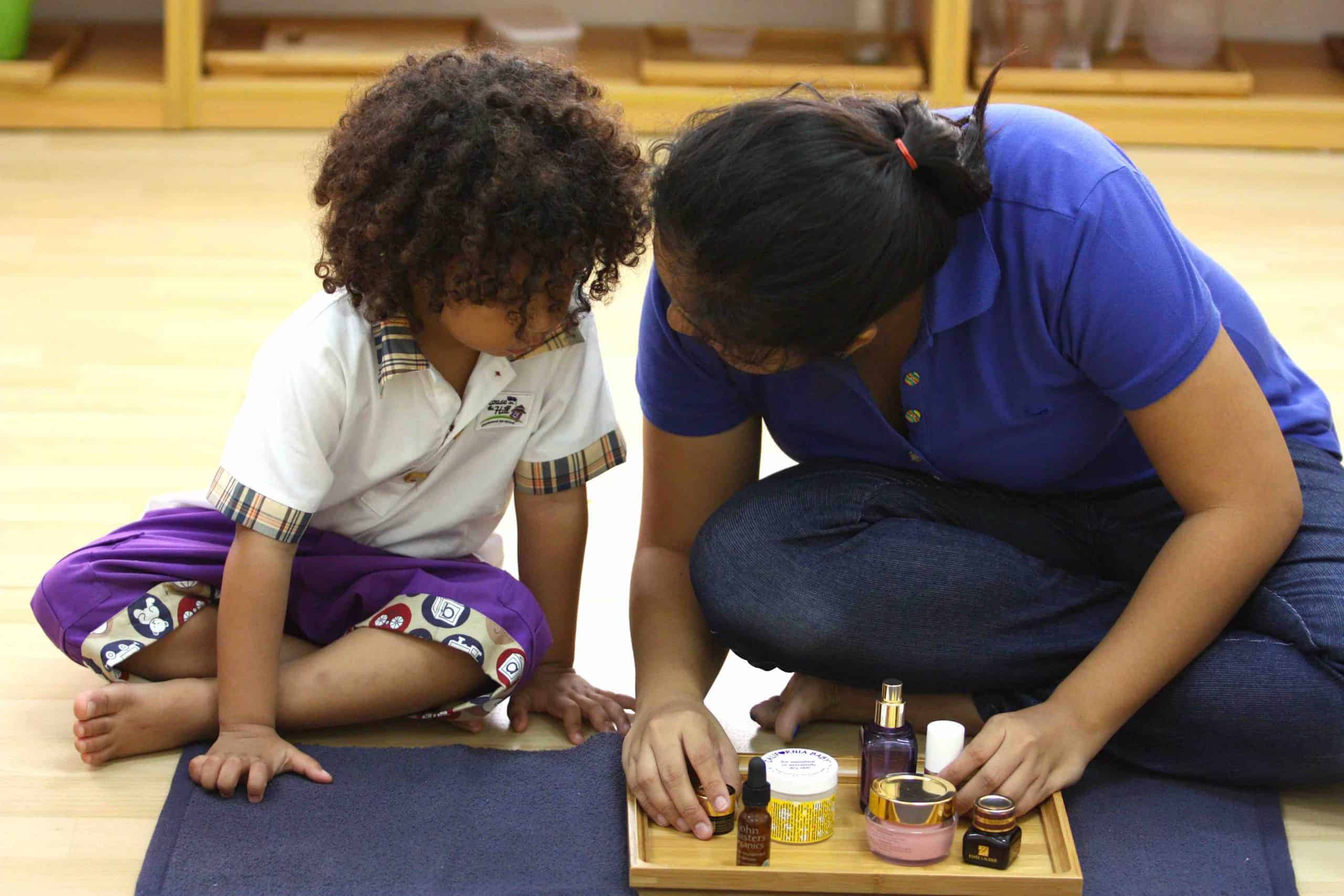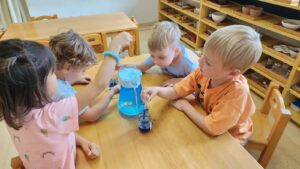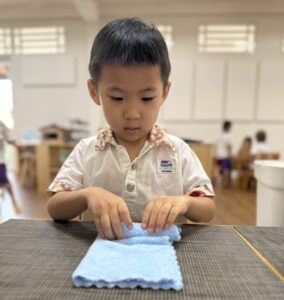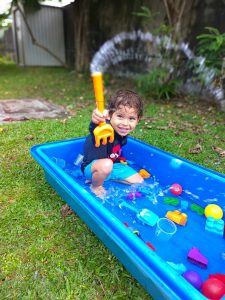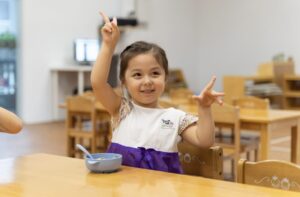A Montessori classroom stands out not just in how it functions, but also in how it looks. While it may differ greatly from traditional classrooms, a quick image search or a scroll through #montessoriclassroom reveals something remarkable—Montessori classrooms around the world share a distinct, recognisable aesthetic.
At the heart of this consistency is the prepared environment: a thoughtfully arranged space that promotes independence and supports meaningful learning. Central to this environment are the building blocks of Montessori materials, originally developed by Dr. Maria Montessori in the early 20th century. Still used today at House on the Hill, these materials have stood the test of time. So, what makes them so enduring, so purposeful, and so perfectly designed for a child’s development?
At House on the Hill, we proudly use Nienhuis Montessori materials exclusively. Albert Nienhuis was one of Dr. Maria Montessori’s original collaborators, and in 1929, he founded Nienhuis Montessori to craft materials that faithfully reflected her vision and high standards. Today, Nienhuis is internationally recognised as the benchmark for quality in Montessori materials. We value these materials for three key aspects of their design: their educational purpose, their intentional method of use, and their aesthetic appeal and enduring craftsmanship. They are the Montessori building blocks.
Purpose: Foster Independent Learning Along a Child’s Natural Path of Development
Montessori materials are designed with what’s known as “control of error”—a built-in feature that allows children to spot and correct their own mistakes independently, without needing teacher intervention. Each material also focuses on isolating a single concept, such as size, shape, or colour. This helps children fully grasp one idea at a time, building confidence and mastery before progressing to more complex tasks that combine multiple concepts.
An excellent example of both these concepts are the knobbed cylinders. A series of four wooden blogs have a series of holes, each with a matching knobbed cylinder that fits perfectly inside. Each block presents a different introduction to height and diameter. It will be obvious to the child if the cylinder is in the wrong hole: either it will not fit according to its diameter or it will be too tall or too short. As the child masters each block they can then begin to use multiple blocks at once.
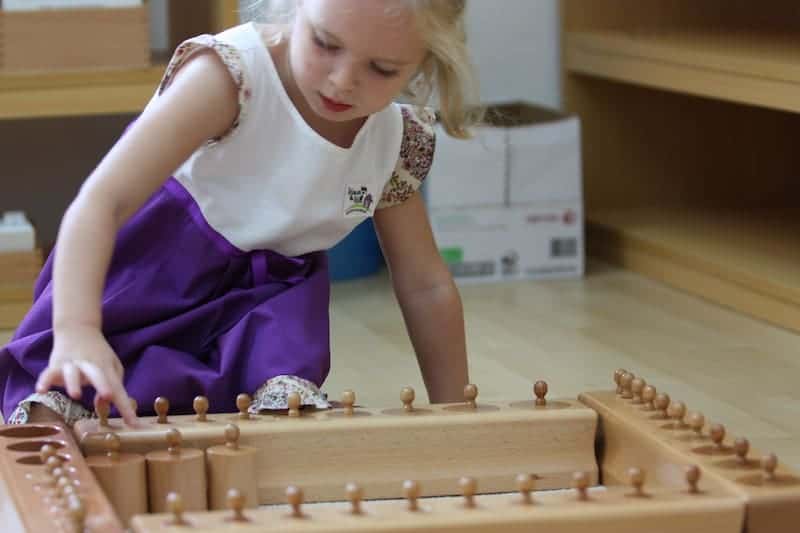
Use: engage with the child’s senses and encourage full-body learning
Dr. Montessori was an early advocate for sensorial learning and observed the connection between a child’s cognitive development and movement. Her materials facilitate that link even more. For example, we may not often associate language development with fine and gross motor activity, but Montessori’s sandpaper letters and the large movable alphabet make language learning interactive.
As children learn phonic sounds, they trace a sandpaper letter while saying the sound of the letter. Once the child has mastered all the letters, they will use the large movable alphabet (LMA) to begin to spell.
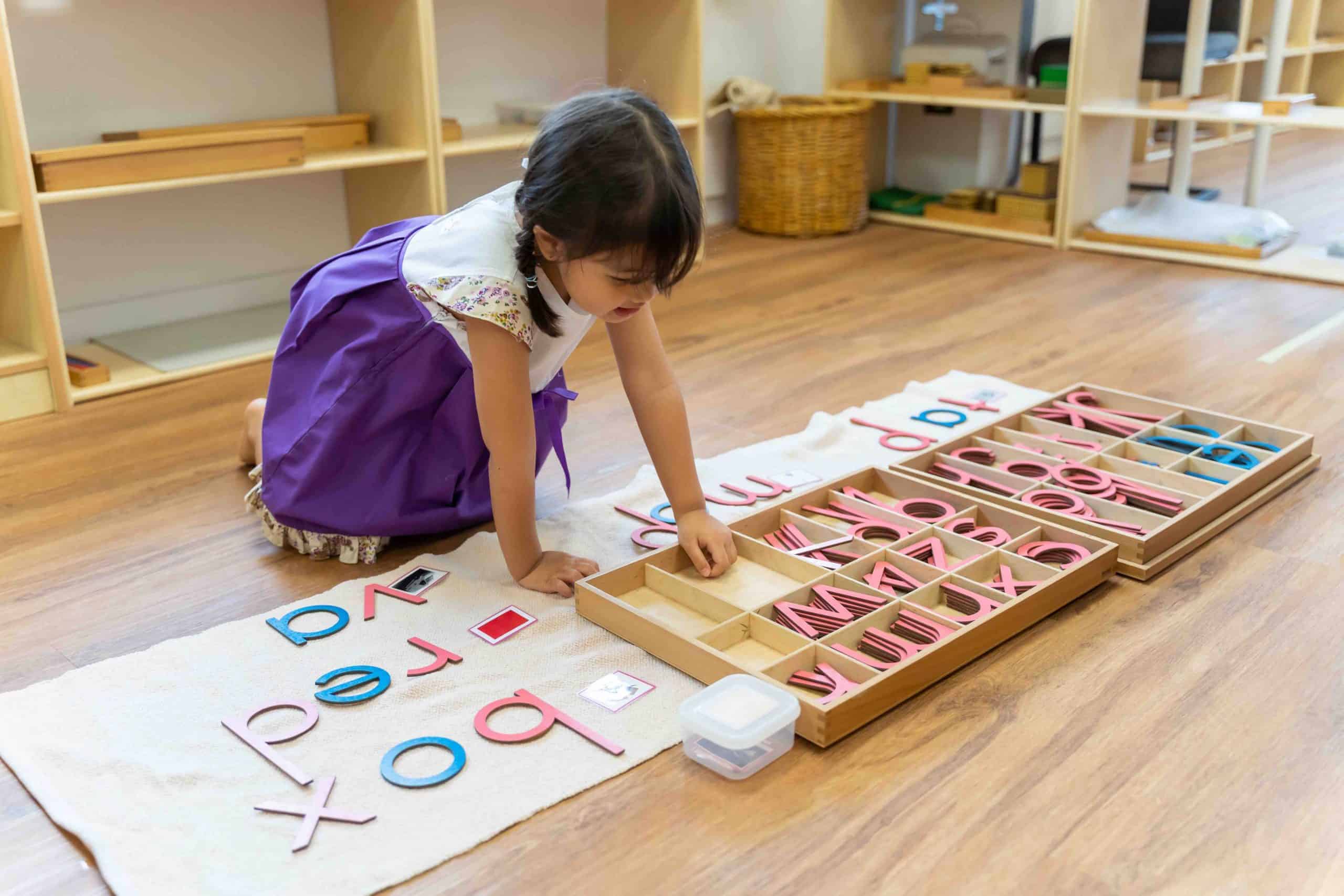
Appearance: natural, real, beautiful materials that attract and interest children
Our classrooms have almost no decoration, instead, the focus is on the beauty of the materials. The materials are usually simple in colour, but made with excellent craftsmanship. Too many designs, flashing lights or glitter ultimately distract from the learning and overwhelm the child. In the right environment, children will be drawn to the stocked shelves where they can learn, problem-solve, and explore.
Dr. Montessori believed that children should experience the real world and learn to carry themselves in it. Everything is made of non-synthetic materials such as wood, metal, ceramic, or even glass. Some of the things are fragile, and so teachers work with children to learn the proper care and gentleness needed.
Montessori Infant materials in our Nido Classroom
The beauty and genius of the materials are not limited to our playgroup and mixed-age classrooms! Dr. Montessori designed materials for even our littlest children, and they can be found in our Nido Classroom. These materials follow the same design principles; they are purposefully designed, beautiful, simple, and engaging.
Some materials are almost exactly the same, just simplified and scaled for smaller hands. All materials have the potential to grow with children as they develop.
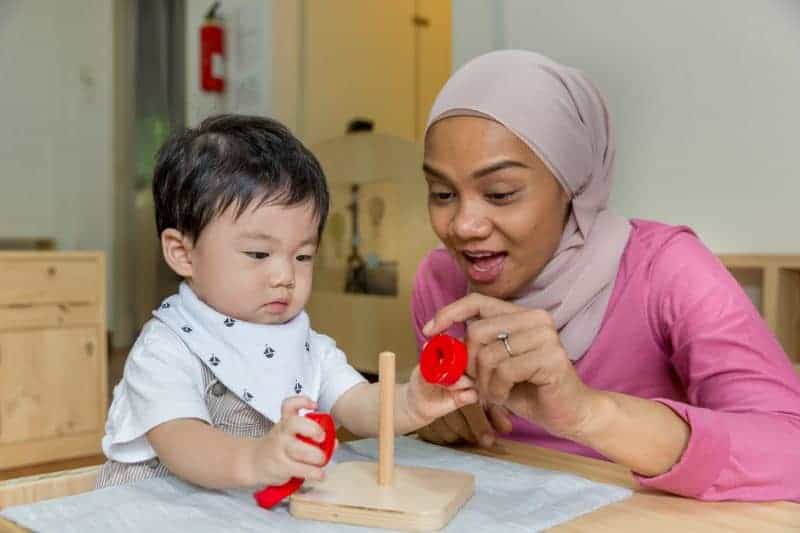
All the materials focus on developmental stages appropriate to the ages of the Nido. Children are learning the concepts of object permanence with the object permanence box, and begin to practice fine motor precision and matching with the 3D object fitting tray.
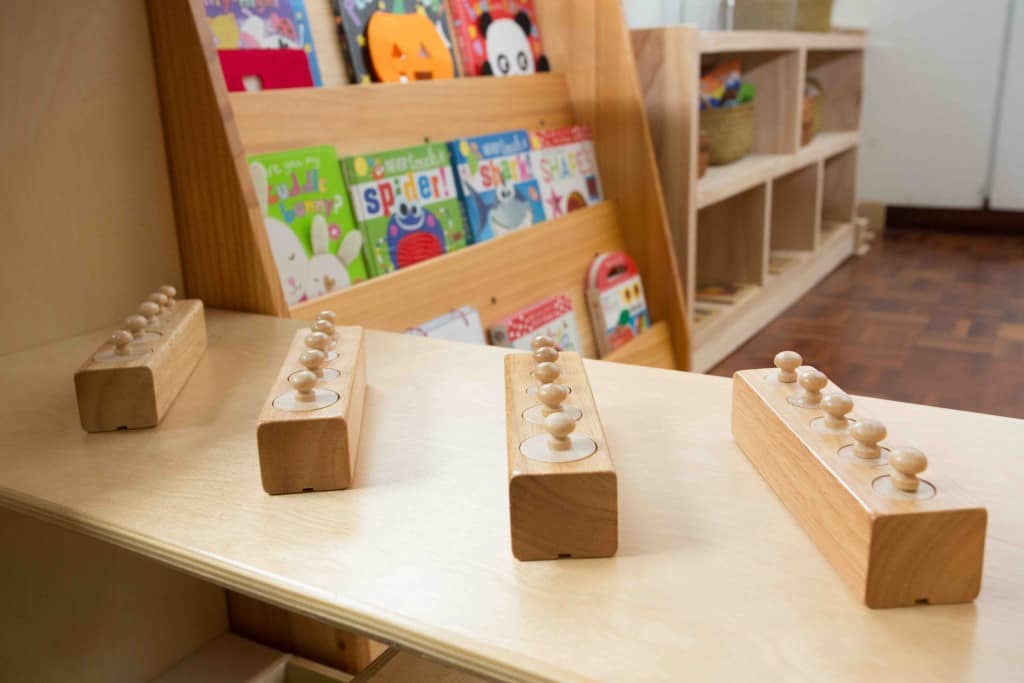
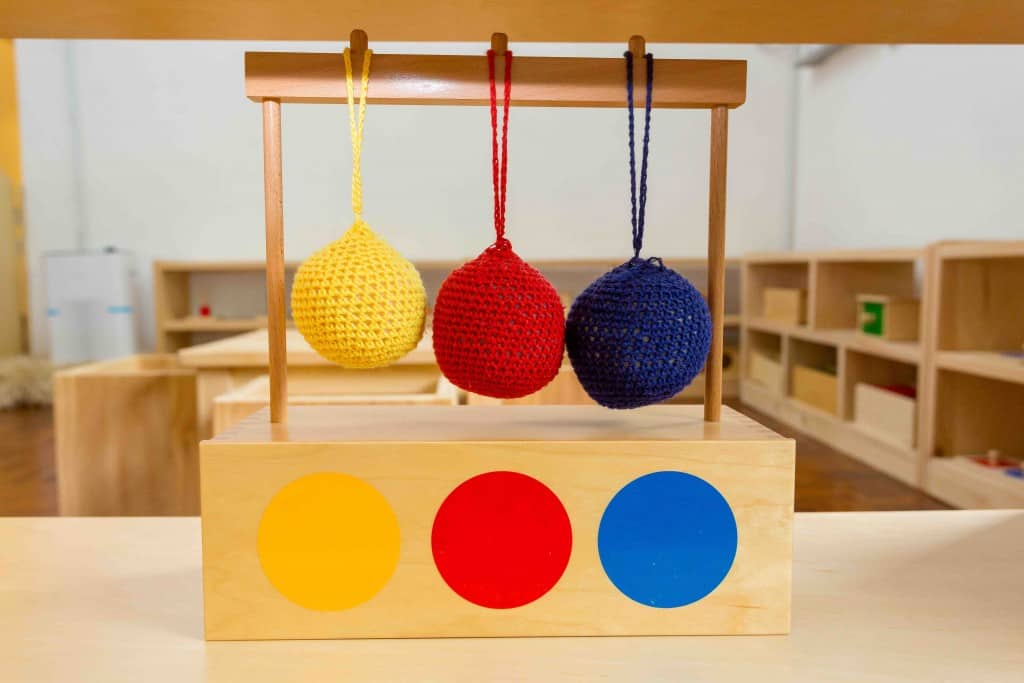
Dr. Montessori believed that children learn best when they are very interested in a subject. She observed in her work with young children that they have a “natural curiosity and zest for learning”. Her materials, lessons, and educational approach are designed to capitalise on the nature of each child. After many years of watching children learning with these materials at House on the Hill, we can confidently corroborate the legitimacy of these findings!

